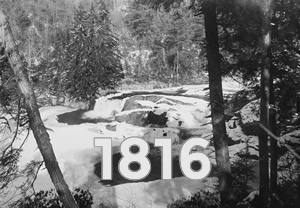In the year 1816, an abnormally cold summer had a disastrous effect on human beings, particularly those in southeastern Canada, the northeastern United States and northern Europe.
June began as usual in North America, with temperatures in the northeastern US and southeastern Canada rising into the 80s (Fahrenheit) during the day.
Then, on Wednesday, June 5, a cold blustery wind swept out of Hudson Bay and drove down across the St. Lawrence Valley and on into New England. Heavy rains whipped by strong winds lashed the land all afternoon and night.
Each hour the temperature dropped. By the next morning, thermometers registered in the low 40s and were still going lower when the snow began.
At Bennington, Vermont, snow fell that day from just after daylight until mid-afternoon.

When finally, the storm stopped, the snow was 12 inches deep in Quebec city, and many parts of New England lay under a 6-inch blanket of snow.
A farmer remarked in his journal that it was "the most gloomy and extraordinary weather ever seen."
Day after day, the winter weather gave no signs of waning.
Instead, it got worse. No thermometer climbed above 50 degrees, and most were in the low 30s.
Tender crops that the hopeful farmers had put out earlier in the month were killed by the unseasonable frost, and the whole land looked as though it had been seared by a scorching fire.
Through most of July and August, the days started with temperatures in the 40s.
By late August, early morning temperatures were in the 30s. On the few successively warm days, people tried gardening again.
Farmers planted corn and other crops, hoping that somehow they might still get a harvest before winter. Nevertheless, time after time their gardens and fields were devas¬tated by frost and hidden by snow.
The killing frost that came shortly after mid-September was the first of the new winter. It was slightly earlier than usual.
The cold weather resulted in many deaths, including deaths from starvation.
Although the winter of 1816-17 was an especially severe one, spring in 1817 came as usual. The summer of 1817 was normal.
What caused the year with no summer?
Most scientists believe that the bizarre weather of 1816 was caused by an unusually low level of solar activity combined with a great shield of dust from volcanic eruptions that blocked out the warmth from the Sun.
Several large volcanic eruptions had occurred just before, culminating in the explosion of Mount Tambora, a huge volcano on the island of Sumbawa, just east of Java, in 1815.